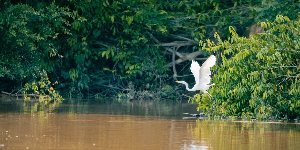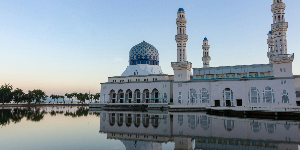
Deramakot Forest Reserve
Deramakot Forest Reserve, nestled in the heart of Sabah, Malaysia, stands as a prime example of sustainable forestry management and biodiversity conservation. This pristine reserve, renowned for its rich flora and fauna, serves as a beacon of hope in the realm of forest conservation. With a focus on sustainable logging practices, community engagement, and wildlife preservation, Deramakot embodies a harmonious coexistence between human activities and nature. Join us on a journey to explore the wonders of Deramakot Forest Reserve and discover the innovative conservation efforts that are shaping its future.
Introduction to Deramakot Forest Reserve
a) Location and Background
Welcome to the lush and vibrant world of Deramakot Forest Reserve Nestled in the heart of Sabah, Malaysia, this reserve spans over 55,000 hectares of tropical rainforest. Established in 1996, Deramakot is renowned for its sustainable forestry practices and rich biodiversity, making it a haven for nature lovers and researchers alike.
Biodiversity and Conservation Efforts
a) Rich Biodiversity in Deramakot
Deramakot is a treasure trove of biodiversity, housing a plethora of flora and fauna. From the majestic bornean pygmy elephant to the elusive Sunda clouded leopard, the reserve is teeming with unique and endangered species. Its diverse ecosystems support a complex web of life, making it a hotspot for conservation efforts.
b)Conservation Initiatives and Strategies
To safeguard its precious biodiversity, Deramakot employs a range of conservation initiatives and strategies. These include habitat restoration, wildlife monitoring programs, and community engagement projects. By working hand in hand with local communities and stakeholders, Deramakot ensures the long-term sustainability of its natural resources.
Sustainable Logging Practices
a) Certified Sustainable Forestry
Deramakot sets the gold standard for sustainable logging practices through its certification by the Forest Stewardship Council (FSC). This certification ensures that timber products sourced from the reserve meet strict environmental and social responsibility criteria, promoting the conservation of forests and the well-being of local communities.
b) Selective Timber Harvesting Techniques
In line with its commitment to sustainability, Deramakot employs selective timber harvesting techniques that minimize environmental impact. By selectively cutting only mature trees and leaving younger ones to regenerate, the reserve maintains the integrity of its forests while supporting the natural regeneration of plant species.
Community Engagement and Benefits
a) Research and Monitoring Programs
b) Scientific Research in Deramakot
Deramakot serves as a hub for scientific research, attracting experts from around the world to study its unique flora and fauna. Research projects focus on biodiversity, climate change impacts, and sustainable forest management practices.
c) Ecosystem Monitoring and Data Collection
The reserve implements rigorous monitoring programs to track changes in the ecosystem over time. By collecting data on wildlife populations, habitat health, and climate trends, Deramakot can adapt its conservation strategies to ensure the long-term sustainability of the forest.
Challenges and Future of Deramakot
a) Threats to the Forest Reserve
Despite conservation efforts, Deramakot faces threats from illegal logging, poaching, and habitat destruction. Climate change also poses challenges to the delicate balance of the ecosystem, underscoring the need for continued protection and vigilance.
b) Sustainability and Future Plans
To secure the future of the forest reserve, Deramakot is committed to implementing sustainable practices and forging partnerships with stakeholders. By promoting environmental education and community engagement, the reserve aims to ensure the preservation of this vital ecosystem for generations to come.
Visitor Guidelines and Conservation Awareness
To enhance the visitor experience and minimize environmental impact, Deramakot offers guidelines for responsible tourism. By educating guests on the importance of conservation and borneo wildlife protection, the reserve fosters a sense of stewardship and encourages sustainable travel practices.As we conclude our exploration of Deramakot Forest Reserve, it is evident that this sanctuary of biodiversity and sustainability serves as a valuable model for conservation efforts worldwide. Through a combination of strategic initiatives, community involvement, and scientific research, Deramakot exemplifies the potential for humans to coexist harmoniously with nature. Let us draw inspiration from the success of Deramakot and continue to work towards a future where nature and humanity thrive in harmony.










